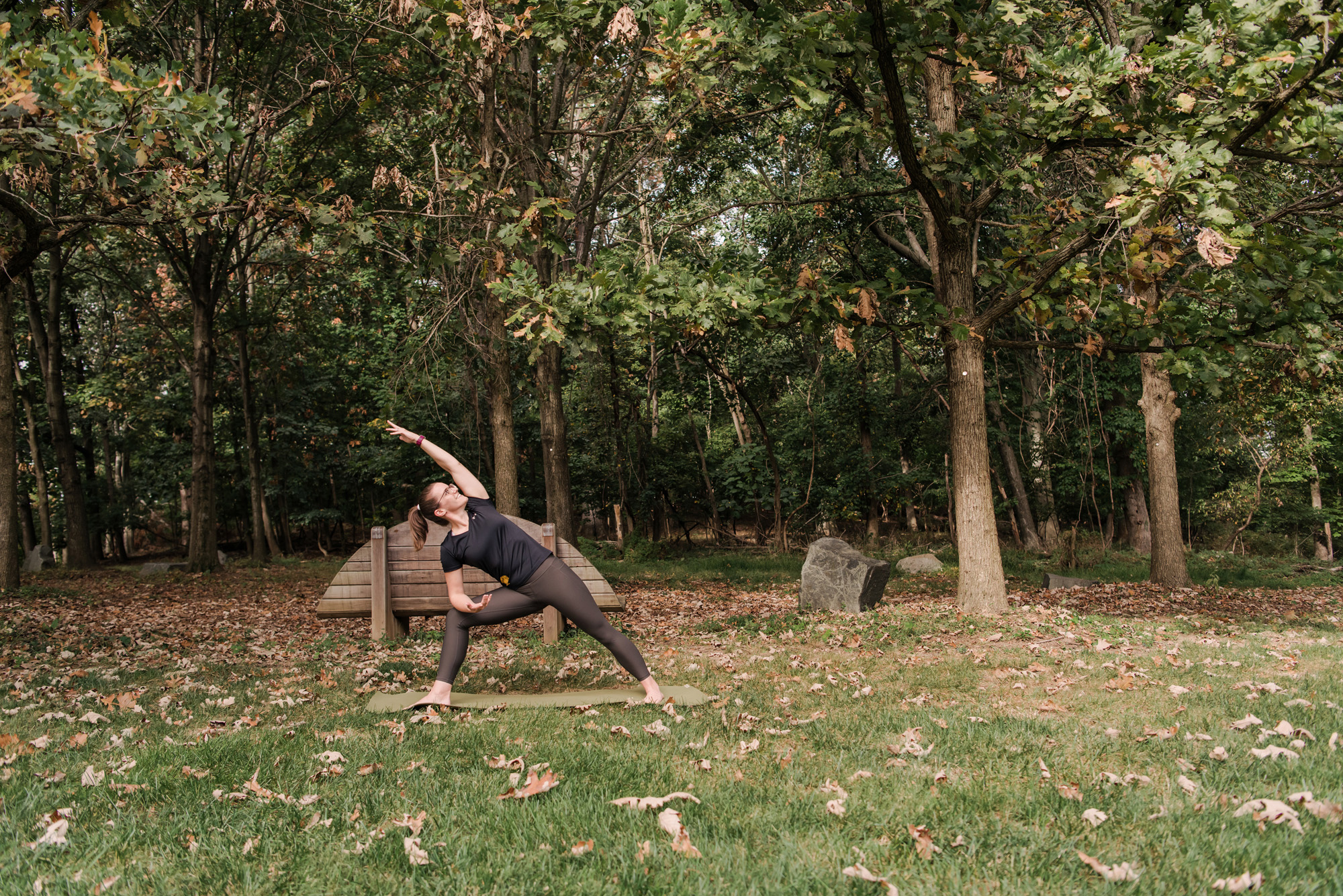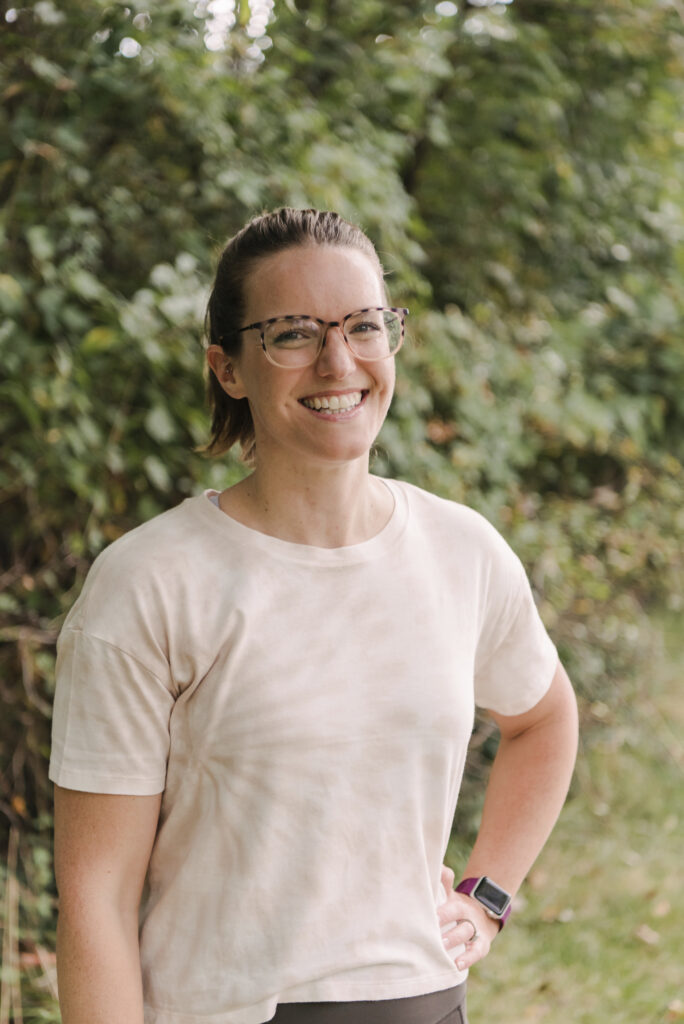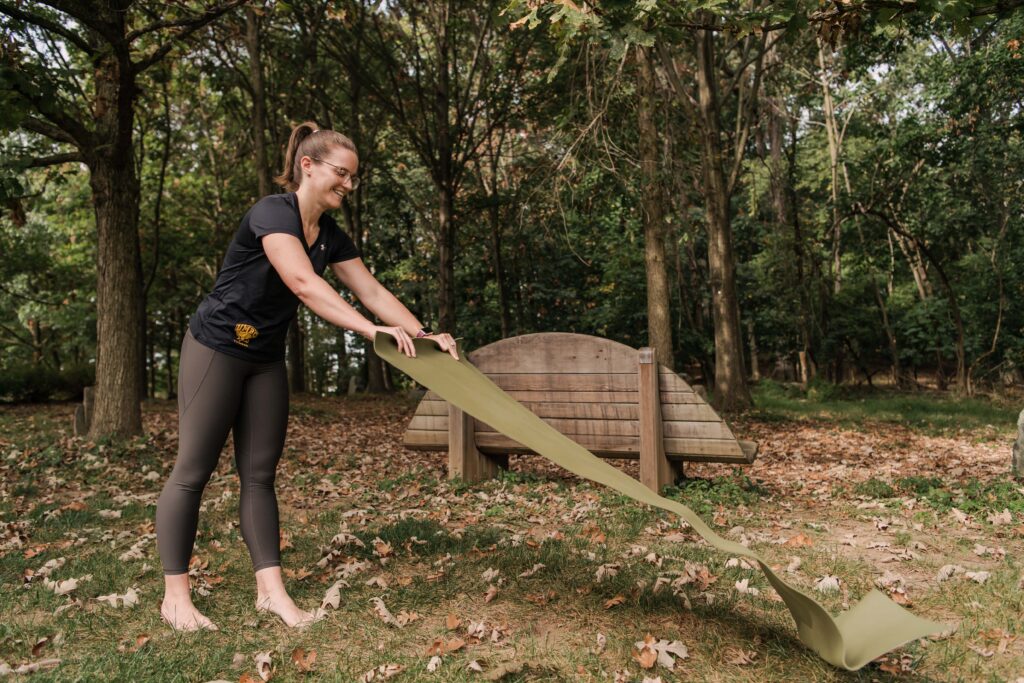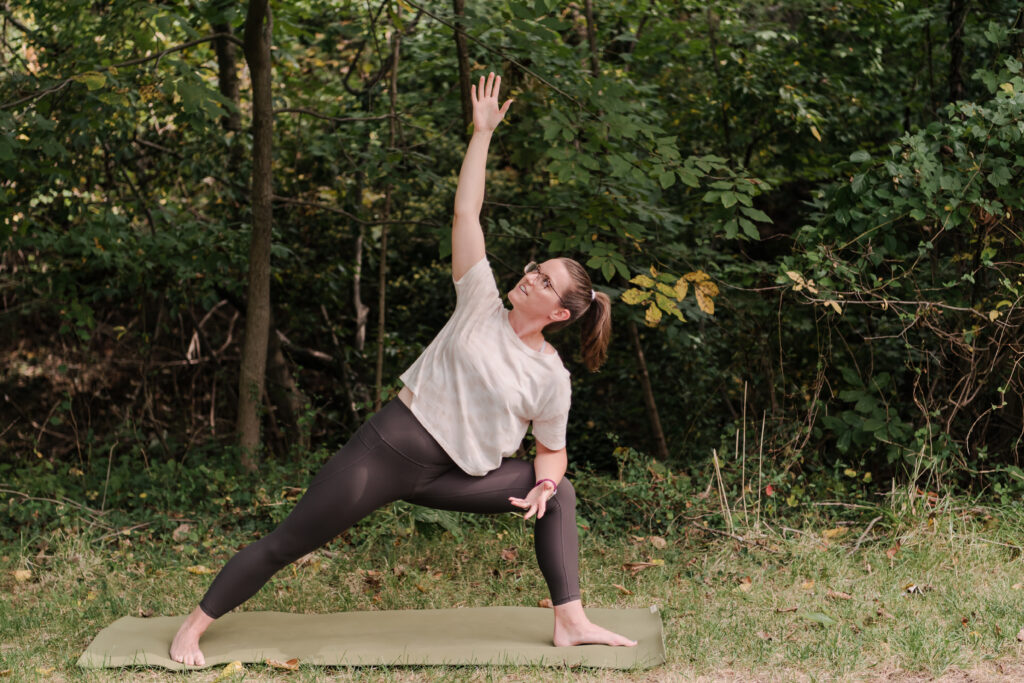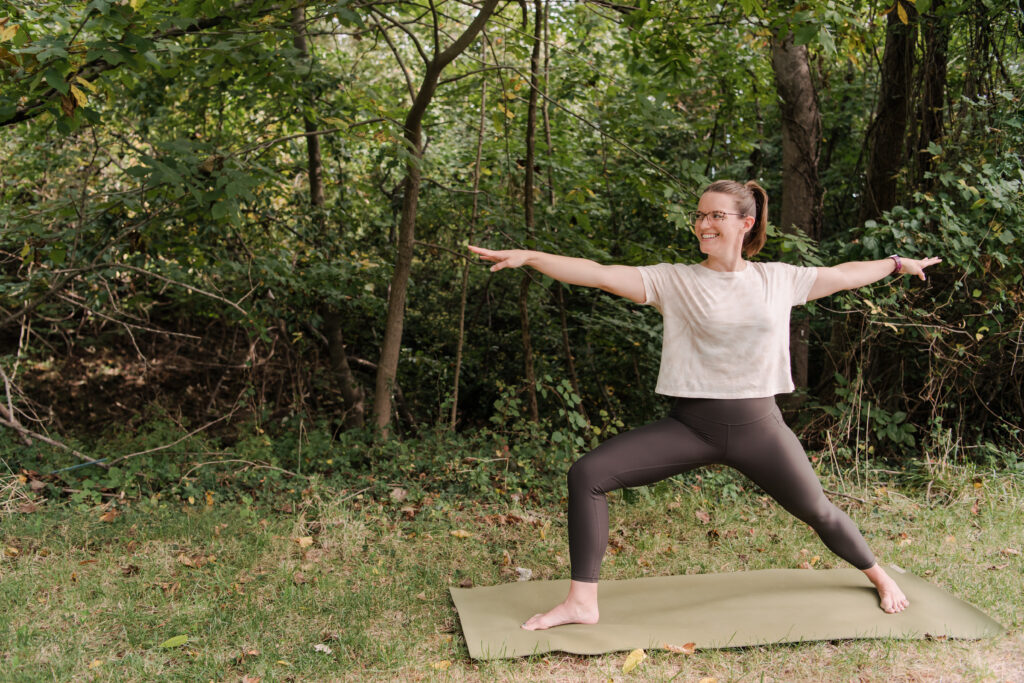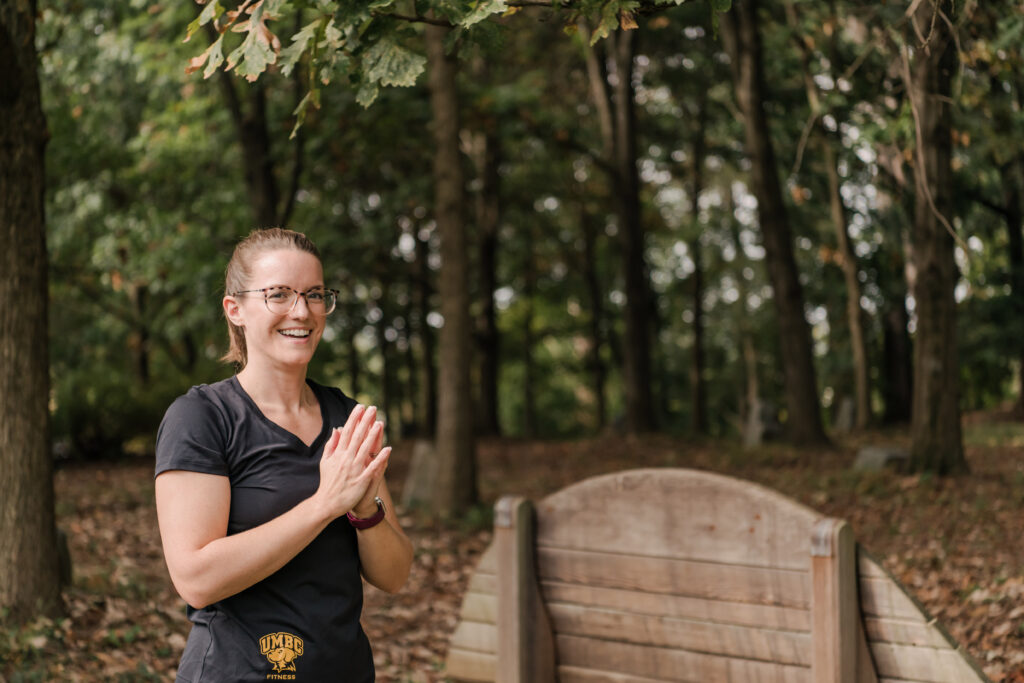With Joella Lubaszewski ’10, theatre, UMBC’s coordinator in fitness and wellness
In the hustle and bustle of exams, family dinners, and everyday life, it can be easy to forget to take time for yourself—time that isn’t spent thinking about the errands you need to run or the emails cluttering your inbox. One could argue that Ferris Bueller said it best when he reminded us, “Life moves pretty fast. If you don’t stop and look around once in a while, you could miss it.”
A great way to reconnect, relax, and recenter is through yoga. UMBC’s coordinator in fitness and wellness, Joella Lubaszewski ’10, theatre, has spent hundreds of hours getting certified so she can teach you the art of finding your calm.
Tools of the Trade:
- A willingness to try (seriously, that’s it): “There are a lot of different types of yoga and ways to practice, you don’t necessarily need anything special,” says Lubaszewski.
- Optional: Yoga mat and yoga blocks.
Step 1: Get Started!
So frequently people seem to think they need to have a certain level of flexibility or balance to get started (or the right wardrobe), but Lubaszewski wants to assure newbies this is not the case.
“I think anybody can do yoga in some capacity,” says Lubaszewski. “There are a lot of different kinds of yoga. Maybe you’re never going to put your foot behind your head, that doesn’t mean you’re not doing yoga. Maybe for you it’s more of the meditation or the act of practicing.”
She encourages those who are new to try a few studios and a few classes before throwing in the towel—the RAC offers quite a few options, too. Having trouble getting started? Try journaling or reading beforehand to ease yourself into the class and center your focus.
Step 2: Find Your Space
Wouldn’t it be cool to have a full yoga studio in your home? Yes. Is that feasible? Maybe not, but it’s okay to dream big. The good news is you don’t need a fancy space or equipment to get started. The rise of online classes has made it easier than ever to take a virtual class from virtually anywhere.
“Some days your practice will be just from your bed in your pajamas and some days it will be on the floor, it just depends on what you need that day,” says Lubaszewski.
The important thing is finding a space that’s yours. One of the biggest challenges that comes with starting is focusing on your practice. You may find that you concentrate better when you’re in an in-person class with others, a live video with an instructor, a pre-recorded class you can do at your own speed, or even just working through your own flow.
Step 3: Find What Works for You
If you’re trying yoga for the first time and can’t seem to get the hang of it, you’re not the only one. Lubaszewski recalls that when she first started practicing she admits she thought it was, “a little boring,” but as she integrated it into her regular routine, she fell in love with it.
You don’t need to have a reason to start or set an intention to start your practice that day. “It’s such a personal thing; if you have a clear reason and intention, sure, you can think about that. If you don’t, maybe you’ll figure it out along the way, but it’s not a problem if you don’t,” she assures new students.
Step 4: Turn Your Brain Off
“I say this during savasana [the final resting pose of almost every class]—try not to think that as soon as class is over you’re going to get changed and go to the grocery store and run your errands,” Lubaszewski encourages. “Just stop, don’t think for a minute.”
We know this one is easier said than done, but if you’re really going to let yourself relax, you’re going to have to channel your inner Elsa and “let it go.” There are so few occasions when we’re actually encouraged not to think, but this helps to reflect on the work you just did and capture the last vestiges of peace before returning to real life.
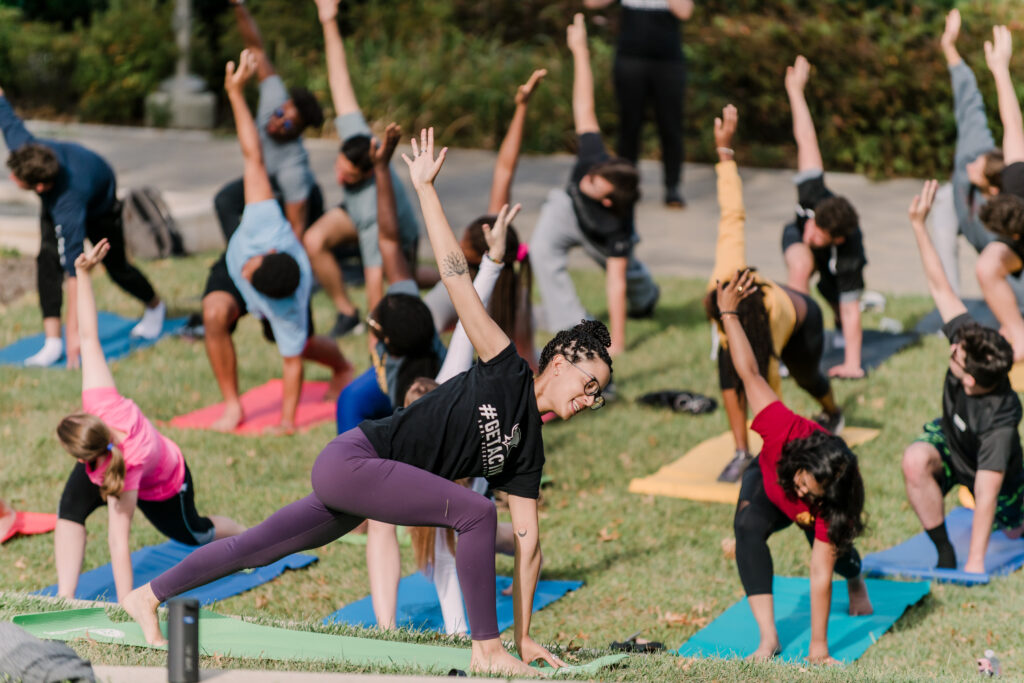
Brain still stuck on a hamster wheel of thoughts? Lubaszewski suggests making an inventory of all the things you can feel—your legs on the mat, your arms at your sides, the fabric of your clothes, etc.
Step 5: Practice Makes Perfect
Even after over a decade of practice, Lubaszewski still doesn’t consider herself an expert (hence why it’s called a practice). For her, the appeal is that you can do it every day but still find new and different ways to suit your needs.
“One of the reasons I really love yoga is that it can be whatever you need, when you need it. Sometimes it’s sitting down for an intense 90-minute workout, sometimes it’s 30 seconds of just breathing because you’re feeling overwhelmed.”
Step 6: Recapture Your Peace Throughout the Day
As you start to condition yourself to take time throughout the day, it can get easier to recapture some of those feelings of peace, even without rolling out your mat.
“It can be easy to wake up and jump into all the things you have to do,” says Lubaszewski, “but giving yourself permission to stop and focus for a second can calm you down and change the trajectory of your day.”
*****
All photos by Marlayna Demond ’11.

